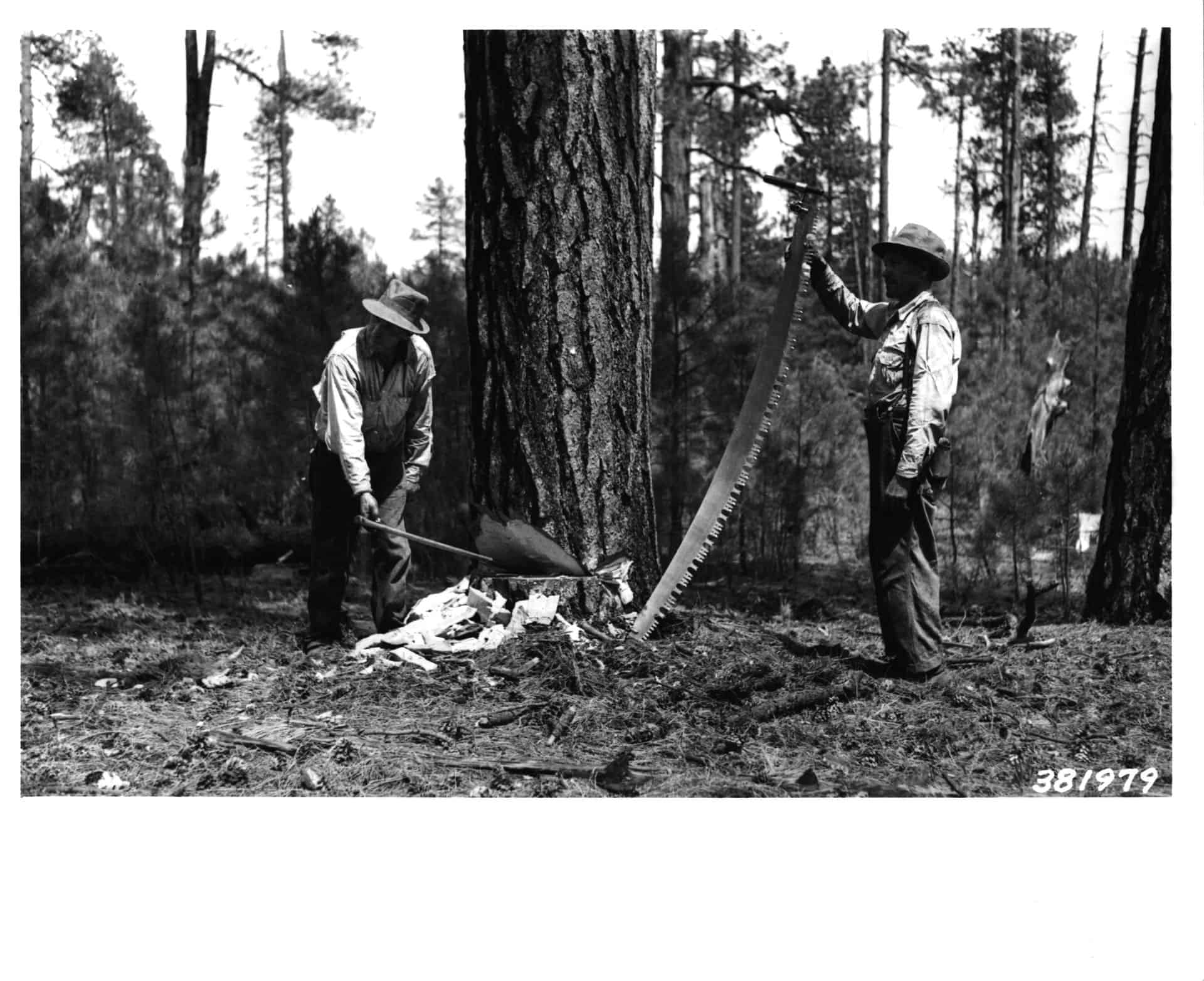 Arizona Lumber and Timber Company, Coconino National Forest, 1939, photo by Walter H. Shaffer
Arizona Lumber and Timber Company, Coconino National Forest, 1939, photo by Walter H. Shaffer
Sometimes language can get in the way. Foresters are becoming aware that their traditional language for cutting trees confuses the public, and reduced their ability to explain what they are trying to accomplish. This is especially true today when trying to reduce the chances of unwanted fire behavior, by “restoring” tree stands to conditions that were less dense.
In 2008, former associate chief Sally Collins coauthored a paper with Hutch Brown about the importance of rephrasing the purpose and need statement for vegetation projects, eliminating the use of traditional silvicultural terminology and replacing it with the language of a new collaborative process. They pointed out that the technical language is difficult for lay audiences to understand, and because it originated in a timber culture, the language can cause confusion about a restoration project’s true purpose. For collaboration to work and succeed, a new kind of language is needed that clearly communicates the intended restoration purpose.
In pointing out the problems with silvicultural terms such as “commercial” or “pre-commercial thinning”, “crown spacing”, “ladder fuels”, and “conifer competition”, Collins and Brown point out: “Whereas Forest Service professionals and many interested groups are familiar with terms like these, others are not. Sustainable restoration efforts require broad public involvement and support, yet relatively few people are likely to engage in a project when they do not understand the terms used to describe it.”
The same criticism of timber project descriptions also holds true for planning under NFMA. Perhaps there is a way to be faithful with the act, but translate the terminology in ways that explain the ecological purpose of the projects.
Here are some of the possibilities:
| NFMA Requirement | 1982 Terminology | Possible New Terminology |
| Determine forest management systems, harvesting levels, and procedures, and the availability of lands and their suitability for resource management | Multiple-use prescription for each management area | Agree on a theme for an area – what is the degree of human influence on natural processes like fire and insect and disease outbreaks?;What are acceptable changes and rates of changes to the forest?What are acceptable types of burning of the forest? |
| Identify lands not suited for timber production | Lands suitable or not suitable for timber production | Identify areas where trees can or cannot be removed and sold |
| Insure that cut designed to regenerate an even-aged stand will be used (for clearcuts only where its optimal) where such cuts are consistent with soil, watershed, fish, wildlife, recreation, esthetic resources, and regeneration of the timber resource | Even-aged silviculture and even-aged stands | Identify landscapes where we prefer trees at the same age |
| Insure timber will be harvested only where there is assurance that such lands can be adequately restocked within five years after harvest | Restocking lands within 5 years after final harvest | Provide small 6-inch trees within 5 years after a stand of large trees has been removed |
